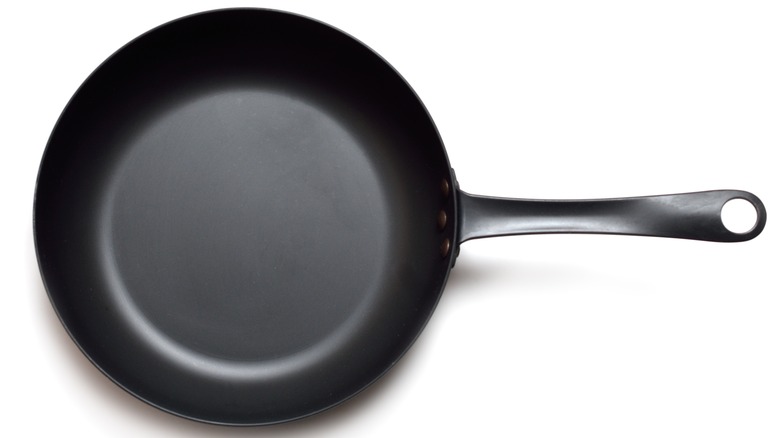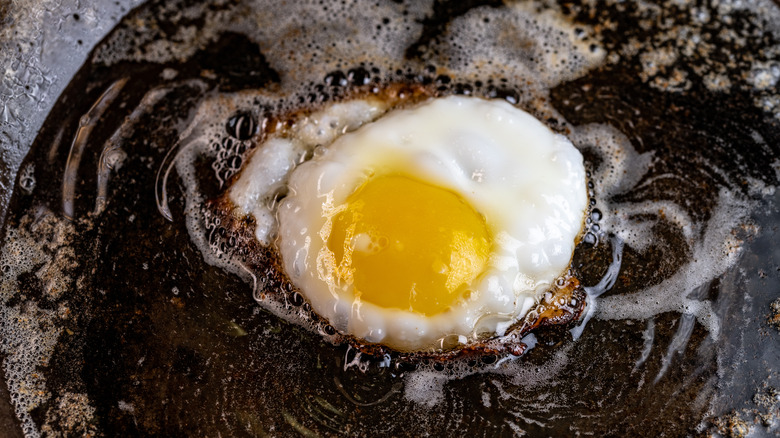Do You Need To Season A Carbon Steel Pan?
The safety of your cooking vessels is one of the last things anyone wants to worry about, especially if you love to tinker in the kitchen and prepare meals for family and friends. Some cookware materials are more prone to degradation, which can manifest as scratches, flaking, or the leaching of synthetic polymers into food. Additionally, dangerous fumes can be released while heating non-stick cookware, even those labeled as non-toxic. Cast iron and carbon steel pans, are great alternatives to chemically-coated pans, and can deliver an almost non-stick experience. While they have a lot in common, carbon steel, an amalgam of carbon and iron, generally isn't as familiar to home cooks as it is to professionals.
Restaurants use carbon steel because it retains heat decently, and it can go right from the burner into a 1200-degrees Fahrenheit oven (depending on what the handles are made of). Plus, the pans have a smooth finish and less heft than cast iron. Cooking in them offers the pristine omelets and perfect sear that restaurants do so well, in addition to more agility for flipping the contents. If they're durable enough for a commercial environment, they'll be workhorses in the home kitchen. However, before that can occur, they'll need to be seasoned.
Season carbon steel for a near non-stick surface
Seasoning a carbon steel pan is a straightforward process, and one that increases in efficacy with correct care. With continued use, the cooking fat and natural oils in food build and create layers, called patina, bonding to the material to provide a plastic-like surface. Even if the pan comes preseasoned, it still needs to be treated before it's put into play. In those cases, the film used to keep the pan from rusting after production will have to be removed with an assertive soap and hot water scouring. It should be thoroughly dried immediately after.
To begin the seasoning process, open the windows and turn on the vent hood. Start with a dry pan on low heat. With a clean towel, wipe the interior and exterior of the hot pan with a neutral oil (such as canola, grapeseed, or vegetable). Do this sparingly, as a restrained application yields better results; and it's important to rub off every bit of excess oil. Place the pan back on the burner and dial it up to high, sliding the pan around to make sure the heat is well distributed. Alternatively, the cookware can go into a 450-degree Fahrenheit oven. It will require approximately 10 to 30 minutes respectively. Bronzed coloration signifies areas where the pan has been seasoned. Repeat the steps until the pan is a deep brown.

